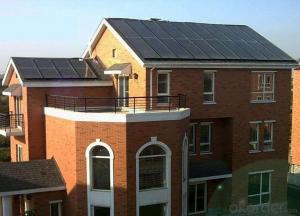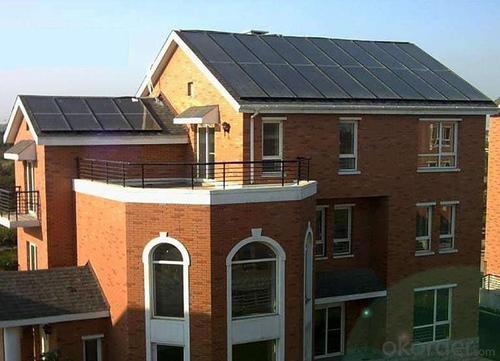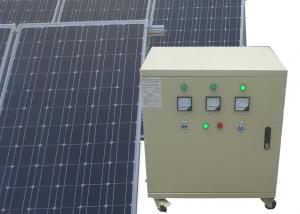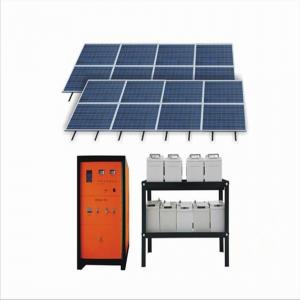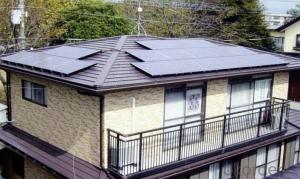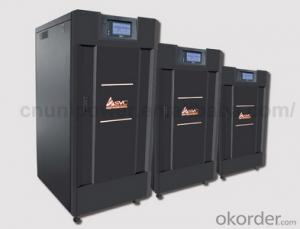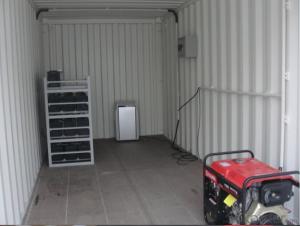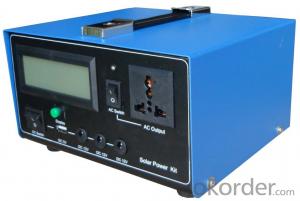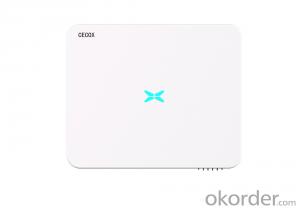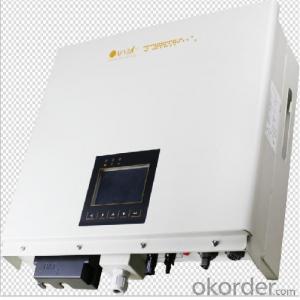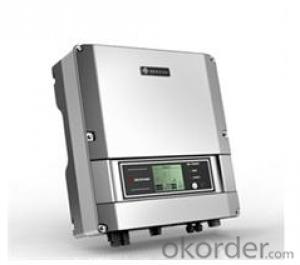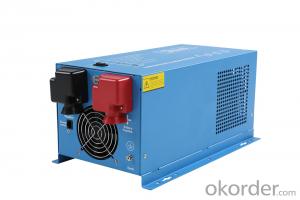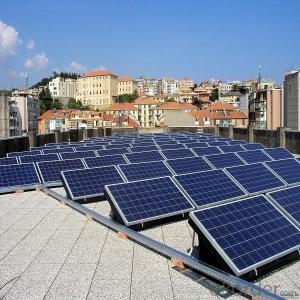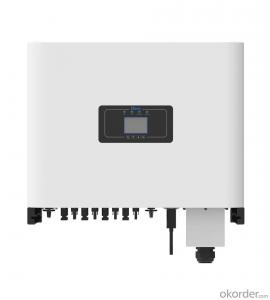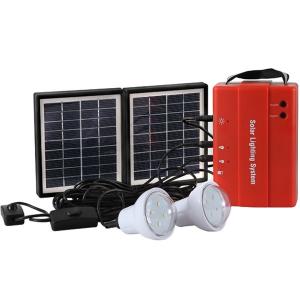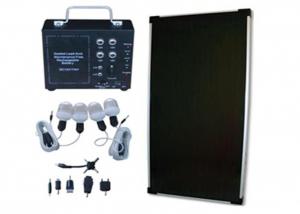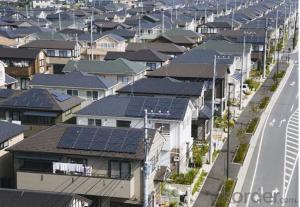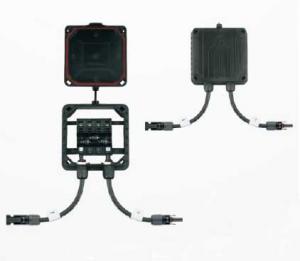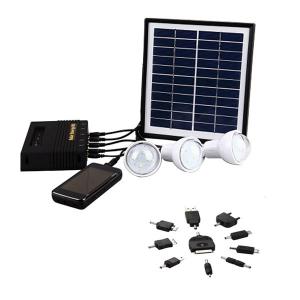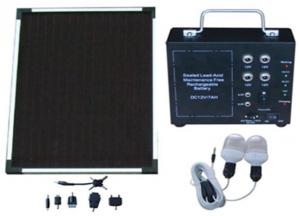Simmark Solar Energy Systems 20kw Solar Grid-Off Power System (3 Phase)
- Loading Port:
- China main port
- Payment Terms:
- TT OR LC
- Min Order Qty:
- 1 set
- Supply Capability:
- 500 set/month
OKorder Service Pledge
OKorder Financial Service
You Might Also Like
Specification
1.Technical parameters of 5kw Solar Off-grid Power System 20KW
- Solar panels
Power(Pmax): 300 Wp
Dimension: 1640x992x40 mm
Working Voltage(Voc): 39.7V
Working Current(Imp):9.32A
Weight: 20 kg
-PV Inverter with controller
Efficiency: >85%
Pure sine wave
AC 380V 50/60Hz output
Working Temp: 0℃~40℃
Battery overvoltage protection,undervoltage protection,overload protection,short circuit protection, overtemperature protection,etc.
650*570*1270mm 180KG
-Mounting Bracket
Flat roof or Ground: Galvanized steel type;
Tile roof: Aluminium type
Wind Load Resistanc: 45m/s
Snow Load: 2kN/m2
-GEL Battery of 12V 250Ah
520*269*228mm 64KG
-DC Cables
PV1-F
TUV/UL certificates
2. Product images
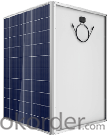
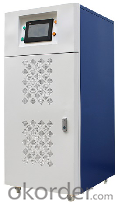
3. Product list
| No. | Item |
| 1 | Solar Panels |
| 2 | PV Inverter with controller built-in |
| 3 | Controller |
| 4 | Mounting racks |
| 5 | DC Cables |
| 6 | AC Cables |
| 7 | MC4 Connectors |
| 8 | GEL Battery |
| 9 | Combiner Box |
| 10 | Distribution box |
4. Remark
-In rainy days, the battery can support 3500W load work 24hours.
-The maximum power load should not exceed 18KW (including inductive load impact: such as refrigerators, air conditioners, washing machines, etc. with motor load).
-The battery can be fully charged in 5-6hours under STC sunshine condition.
5. Package
Wooden case or carton pallet packing


- Q: Can solar energy systems be used for heating and cooling?
- Yes, solar energy systems can be used for heating and cooling. Solar thermal systems can be used to harness the sun's energy to heat water or air, which can then be used for space heating or water heating. Additionally, solar-powered air conditioning systems exist that utilize solar energy to cool indoor spaces.
- Q: Can solar energy systems be used during a power outage?
- Yes, solar energy systems can be used during a power outage if they are equipped with battery storage. The batteries store excess solar energy generated during the day, which can then be used to power essential appliances and devices during an outage. However, if a solar energy system is not equipped with battery storage, it will not be able to provide electricity during a power outage as it relies on the grid for operation.
- Q: How does the angle of solar panels affect their efficiency?
- The angle of solar panels greatly affects their efficiency. By adjusting the angle of the panels to match the latitude of their location, they can maximize their exposure to the sun's rays. Tilting the panels towards the sun helps to capture more sunlight throughout the day, resulting in increased energy production. A proper alignment ensures that the panels receive optimal sunlight, leading to improved efficiency and higher energy generation.
- Q: What are the advantages of using solar energy systems?
- There are several advantages of using solar energy systems. Firstly, solar energy is a renewable and abundant source of power, meaning it will never run out and can be harnessed anywhere in the world. Additionally, using solar energy helps to reduce greenhouse gas emissions and combat climate change, as it produces no harmful pollutants during operation. Solar energy systems also provide energy independence, allowing individuals and communities to generate their own power and reduce reliance on traditional energy sources. Furthermore, solar energy can lead to cost savings in the long run, as it reduces electricity bills and offers potential financial incentives such as tax credits or feed-in tariffs. Lastly, solar energy systems require minimal maintenance and have a long lifespan, making them a reliable and durable option for generating clean energy.
- Q: Can solar energy systems be used in powering music studios or recording studios?
- Yes, solar energy systems can definitely be used to power music studios or recording studios. Solar power systems are a clean and renewable energy source that can provide a reliable and cost-effective solution for powering various electrical equipment, including the high energy-consuming equipment found in music studios. Solar panels can be installed on the roof or any other suitable area of the studio building to harness sunlight and convert it into electricity. This electricity can then be used to power a wide range of equipment such as amplifiers, mixers, microphones, computers, lighting, and air conditioning systems. The size of the solar power system required will depend on the energy needs of the studio. By analyzing the energy consumption patterns and demands of the studio, solar energy experts can design and install a customized solar power system to meet the specific requirements of the studio. One of the advantages of using solar energy in music studios is the potential for significant cost savings. Traditional electricity sources, especially in commercial settings, can be quite expensive. By generating their own electricity through solar power, studios can reduce their reliance on the grid and potentially lower their electricity bills. Additionally, solar energy is a sustainable and environmentally friendly option. Music studios often consume a large amount of electricity, and using solar power can help reduce their carbon footprint and contribute to a greener future. It is worth noting that solar energy systems can also be combined with battery storage systems. This allows music studios to store excess energy produced during the day and use it during times of low solar generation or at night. This further enhances the reliability and independence of the solar power system. In conclusion, solar energy systems can be effectively used to power music studios or recording studios. They offer a clean, renewable, and cost-effective solution that can meet the energy demands of these facilities while reducing their environmental impact.
- Q: Can solar energy systems be used for powering outdoor lighting?
- Yes, solar energy systems can be used to power outdoor lighting. Solar-powered outdoor lighting systems utilize solar panels to convert sunlight into electricity, which is then stored in batteries for use during the night. This eco-friendly and cost-effective solution eliminates the need for traditional power sources, making it an ideal option for outdoor lighting in various applications, such as gardens, pathways, parks, and street lighting.
- Q: Are there any regulations or permits required for installing solar energy systems?
- Yes, there are regulations and permits required for installing solar energy systems. The specific requirements vary by location, but typically involve obtaining permits for building and electrical work, adhering to zoning and building codes, and complying with utility interconnection regulations. It is important to consult with local authorities or a professional installer to ensure compliance with all necessary regulations and obtain the required permits before installing a solar energy system.
- Q: Do solar energy systems require maintenance?
- Yes, solar energy systems do require maintenance. Regular maintenance, such as cleaning the panels, checking for any damage or malfunctions, and ensuring proper functioning of the system, is necessary to maintain the efficiency and longevity of the solar energy system. Additionally, periodic inspections by professionals can help identify and address any potential issues before they become major problems.
- Q: Can solar energy systems be used in areas with high levels of vandalism or theft?
- Yes, solar energy systems can be used in areas with high levels of vandalism or theft. However, additional security measures should be implemented to protect the systems. This can include installing surveillance cameras, using tamper-proof equipment, and securing the panels and batteries. By taking these precautions, solar energy systems can still be effectively utilized in such areas.
- Q: Can solar energy systems be used in areas with limited access to the electrical grid?
- Yes, solar energy systems can be used in areas with limited access to the electrical grid. Solar energy is a decentralized and off-grid solution that can be deployed in remote or off-grid locations. It provides a reliable and sustainable source of electricity, especially in areas where grid infrastructure is lacking or unreliable. Solar systems can be easily installed and can power homes, businesses, and even entire communities, allowing them to have access to electricity without relying on the traditional electrical grid.
Send your message to us
Simmark Solar Energy Systems 20kw Solar Grid-Off Power System (3 Phase)
- Loading Port:
- China main port
- Payment Terms:
- TT OR LC
- Min Order Qty:
- 1 set
- Supply Capability:
- 500 set/month
OKorder Service Pledge
OKorder Financial Service
Similar products
Hot products
Hot Searches
Related keywords
